13 April 2021 was a painful day for the Portuguese.
As the final whistle blew at the Sapsan Arena in Moscow, A Selecção das Quinas collapsed to the ground, lamenting their 1-0 aggregate defeat to Russia in the Euro 2022 playoffs. Qualifying was finished and Portugal were on their way home.
Now fast-forward to 2 May 2022.
Russia’s invasion of Ukraine left football’s governing bodies with no choice. Russian teams would not compete in tournament play. As the team that had been drawn against Russia in the playoffs, Portugal would receive the invitation to Euro 2022.
The unexpected invitation leaves Portugal with little time to prepare while also limiting their opponents’ preparations. Even despite the late arrival, manager Francisco Neto was among the first to submit his official tournament roster. There’s little mystery within the Portuguese camp as to which players will play which roles. Neto is well-prepared internally, leaving him with more time for opposition analysis reports.
Placed in a difficult group with #2 Sweden, #5 Netherlands and #19 Switzerland, the 29th ranked Portuguese are the minnows in the group, but that’s not to say they won’t be competitive. At February’s Algarve Cup, Portugal defeated #11 Norway 2-0. A 4-0 defeat to Sweden followed, but the match against a very good Norwegian team instilled a sense of belief in the Portuguese. A good run of form in World Cup qualifying, with five wins and two losses to Germany since 19 September 2021.
Portugal is nearing peak form heading into the Euros. While they are the underdog in the group, this tactical analysis will show why they will be a difficult out. Data analysis and scout reports will factor in as well as we discover this largely domestic Portuguese team.
Predicted Startinbg XI
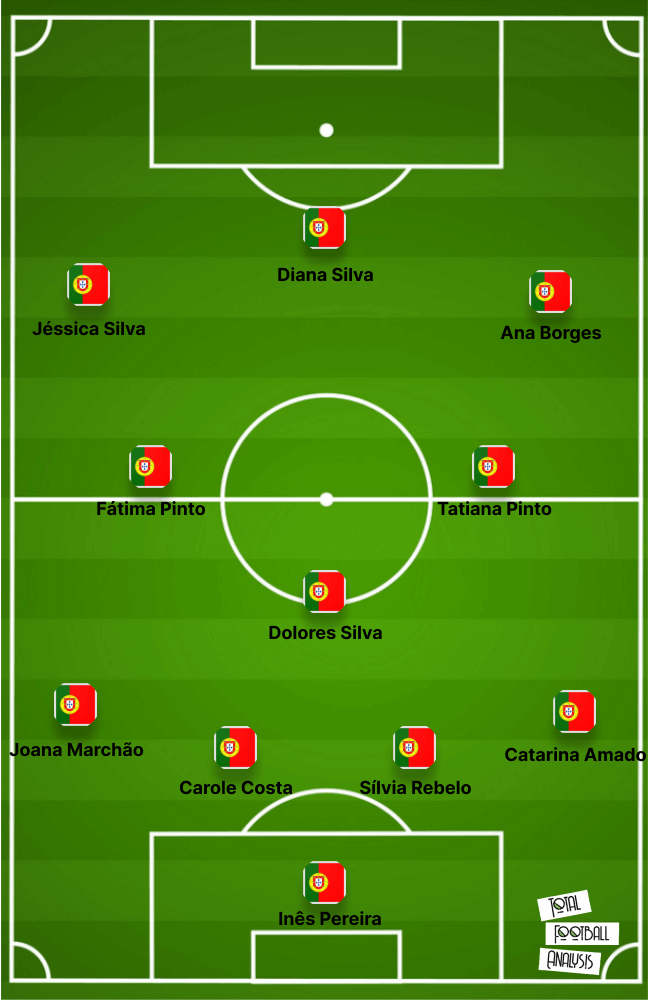
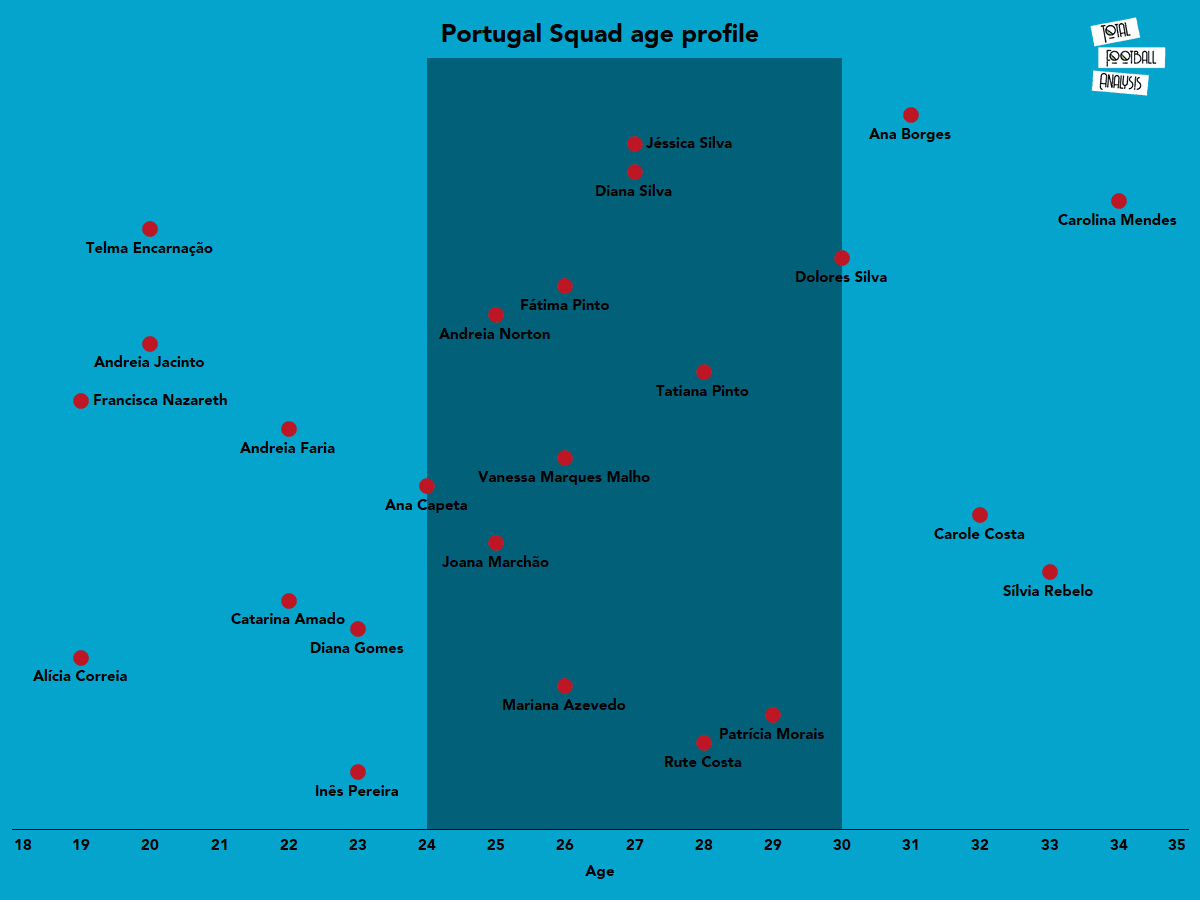
Portugal’s typical formation is a 4-3-3, using the wingers for width and height while isolating them for 1v1 duels. When the Portuguese expect to dominate possession and dictate tempo, the 4-3-3 is the go-to system.
Pereira, one of two players plying their trade outside of Portugal, will start in goal. The Servette goalkeeper stands at 168cm and is a very quick player. Her reflex saves and ability to cover low shots have been key to Portugal in Euro and World Cup qualifying. If Portugal is to make it out of this difficult group, she will have to shine in goal. Managing crosses, especially from set-pieces, will be key. Portugal struggled to deal with Sweden’s corners in the Algarve Cup, conceding three out of four goals on set pieces. If revenge is in the cards, Pereira will have to dominate aerial duels.
Benfica standout centre-back, Costa, will anchor the backline. Her club teammate, Rebelo is likeliest to start beside her, though Neto has shown some flexibility with the second centre-back spot. Costa is a permanent fixture, so it’s her partner that could see rotation. Diana Gomes is the other player likely to feature next to Costa, giving Portugal another weapon on set pieces. Rebelo has received more minutes recently, making her the favourite, but Gomes’ form in World Cup qualifying can’t be ignored, especially with her aerial presence on set pieces.
Moving to the wings, Amado is a shoo-in on the right while Marchão, the Sporting CP star, should see the bulk of the minutes at left-back. Of the two, Marchão is the more attack-oriented while Amado takes on more of a stay-at-home role. She will venture forward as well, but Marchão certainly takes up the higher starting positions and spearheads the Portuguese attack on the left.
Midfield is where we’ll see the most rotation and positional variability. All three players we have tabbed to start can play the #6. When Portugal played Sweden in the Algarve Cup, Dolores Silva played at the base of midfield while T. Pinto played right-centre and F.Pinto operated as the left-centre mid.
Norton will likely feature in each match. She’s a frequent starter and will typically sub into the game if she started on the bench. Faria and Nazareth should see the pitch as well, though most likely from the bench and Malho’s height and box presence is another intriguing rotational option.
Up top, it’s Borges and the Silvas who will see the majority of the starts and minutes. Mendes will factor into the equation too, but she has become more of an option off the bench rather than a starter. Expect the other three, all of whom are in their primes, to lead the team up top. The former Aston Villa player, D. Silva, enjoyed an excellent season with Sporting CP, scoring 16 goals. Her influence will be crucial for Portugal.
Encarnação is the last forward on the team, but the 20-year-old was exceptional for Maritimo, scoring 15 goals, so there is depth up top for Portugal.
Looking ahead to Euro 2022, possession dominance is unlikely given the difficult group they’ve been handed. Stronger, possession-dominant opposition generally leads the Portuguese to adapt. When the system changes, protecting against stronger opposition, the likeliest formation is a 4-4-2 with a diamond midfield. The 3-5-2 and 4-2-3-1 have also been deployed, but a 4-4-2 is the preference. Given the quality of Portugal’s opponents, there’s a very high possibility we will see one of these systems employed.
Neto’s midfield will see rotation, but he does like to keep his front three intact. When Portugal switches to one of their secondary formations, Borges and J. Silva can play as a front two while D. Silva drops to the top of the midfield diamond.
Attacking phase
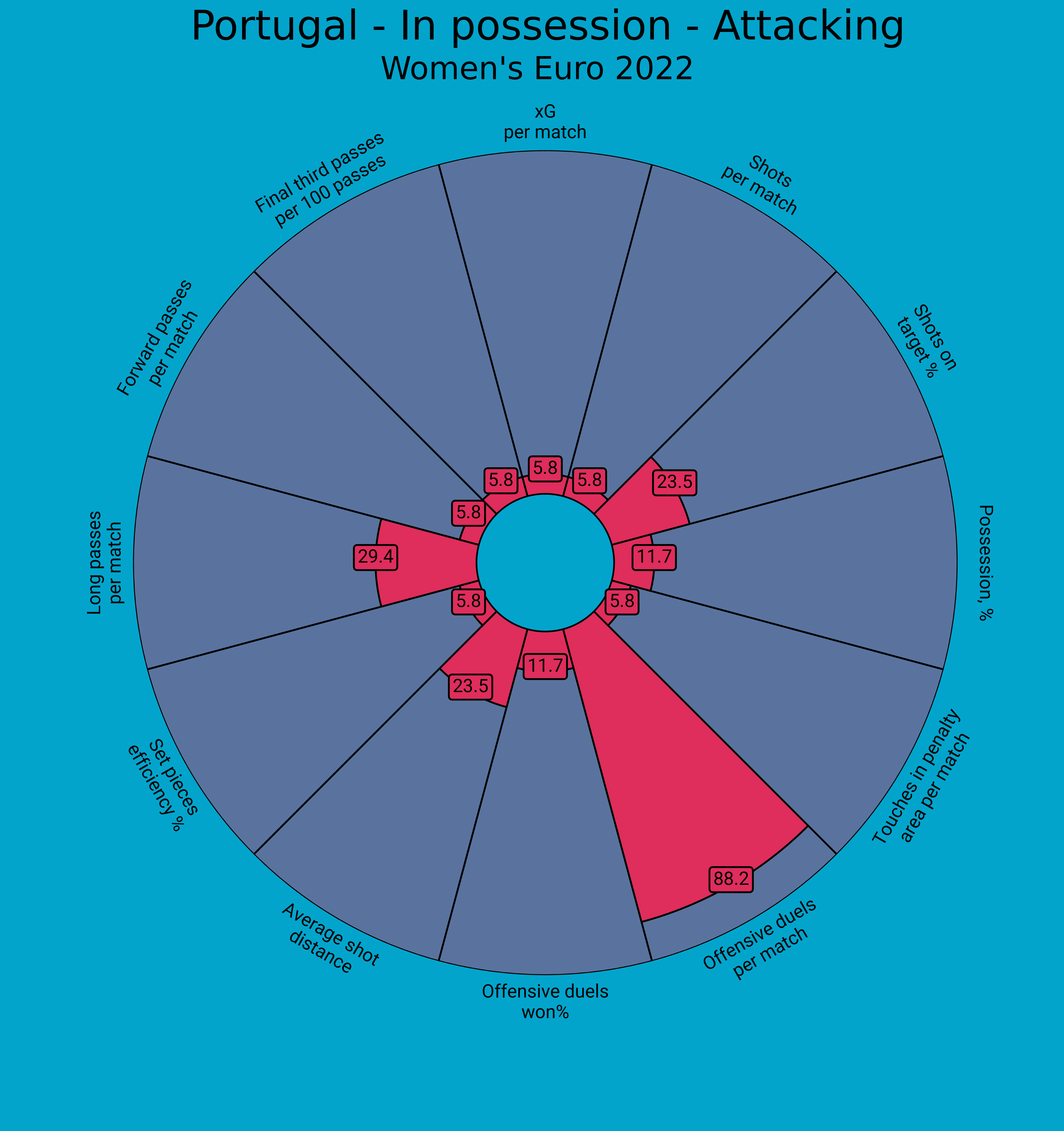
Scoring just 10 goals in eight qualifying matches, the attacking execution was certainly lacking, which is plain to see through our pie chart. Based on percentile rank relative to the other UEFA nations in the past year, Portugal’s one standout category was their offensive duels per match, rating in the 89th percentile. Pair that stat with their 12th percentile offensive duels won percentage and you see the depth of their attacking tactics issues.
Fortunately for the Portuguese, they have turned the corner in World Cup qualifying, which they have nearly completed. Through eight games (of 10 total), they have 20 goals against arguably better competition. Even better, those goals have come from nine different players. Diana Silva, Mendes, C. Costa and Gomes lead the way with three goals apiece. Borges and J. Silva have added a playmaking spark on the wings as true wingers, creating from their central teammates.
Costa and Gomes are centre-backs, which highlights Portugal’s improved set-piece tactics. Mendes scored all of her goals against Israel, but she’s a reliable presence off the bench.
When Portugal is in possession, the key things to look for are outlets to their forwards. The two Silvas will play a big part in Portugal’s attacking success. Both players have tremendous pace and are clever enough to turn on overly aggressive defenders. To set up those passes, Portugal will play from the back so long as the odds of losing the ball are moderate to low. In order to progress, they’ll look to get a midfielder into a forward-facing position. That cue signals the time to play forward.
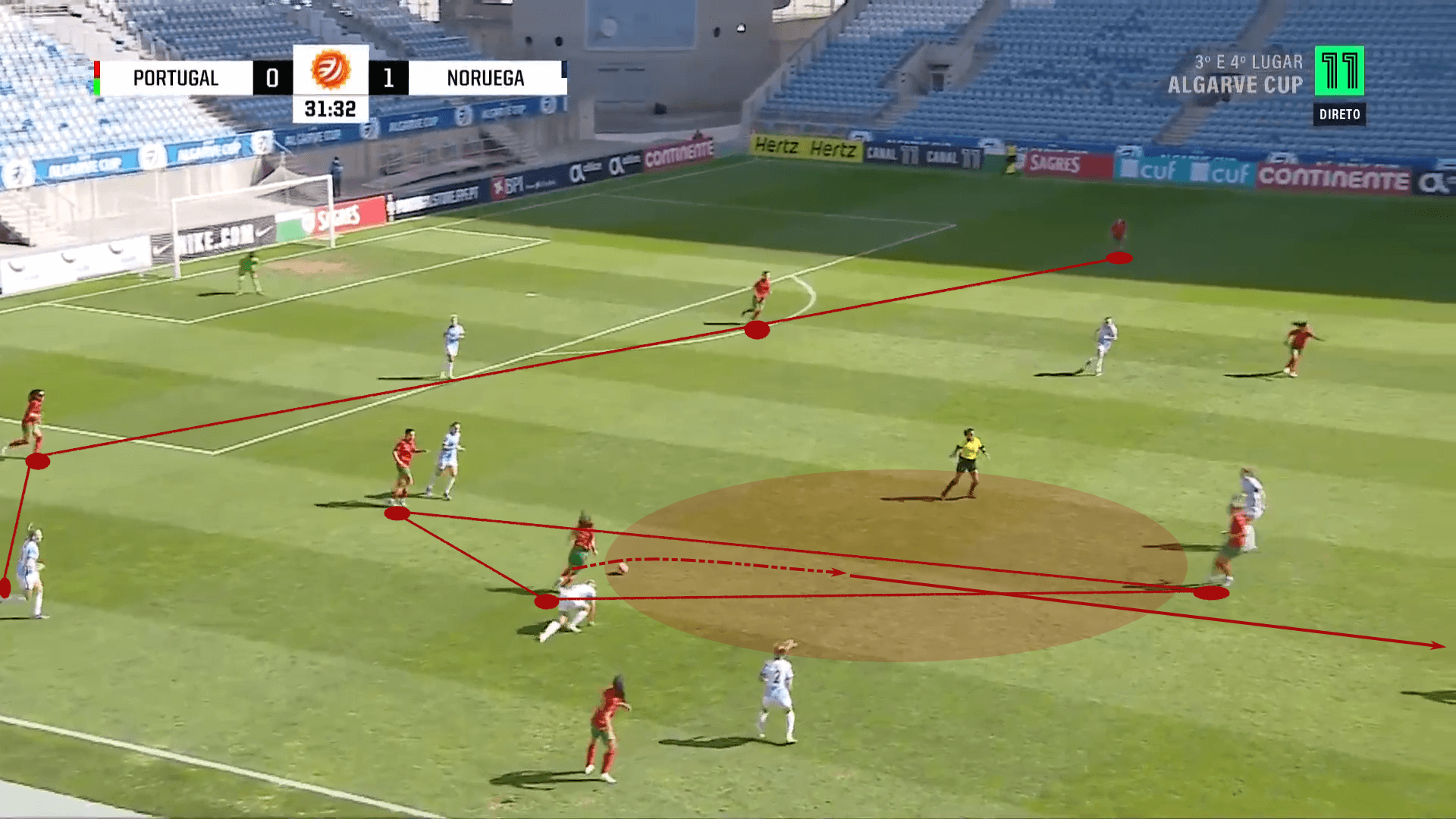
If the first look forward isn’t good enough, they do show good patience to make the extra pass, as we see in the second tactical image. If the two wingers invert (one of the two typically will), then Portugal has an additional body in the centre of the pitch to facilitate that through pass.
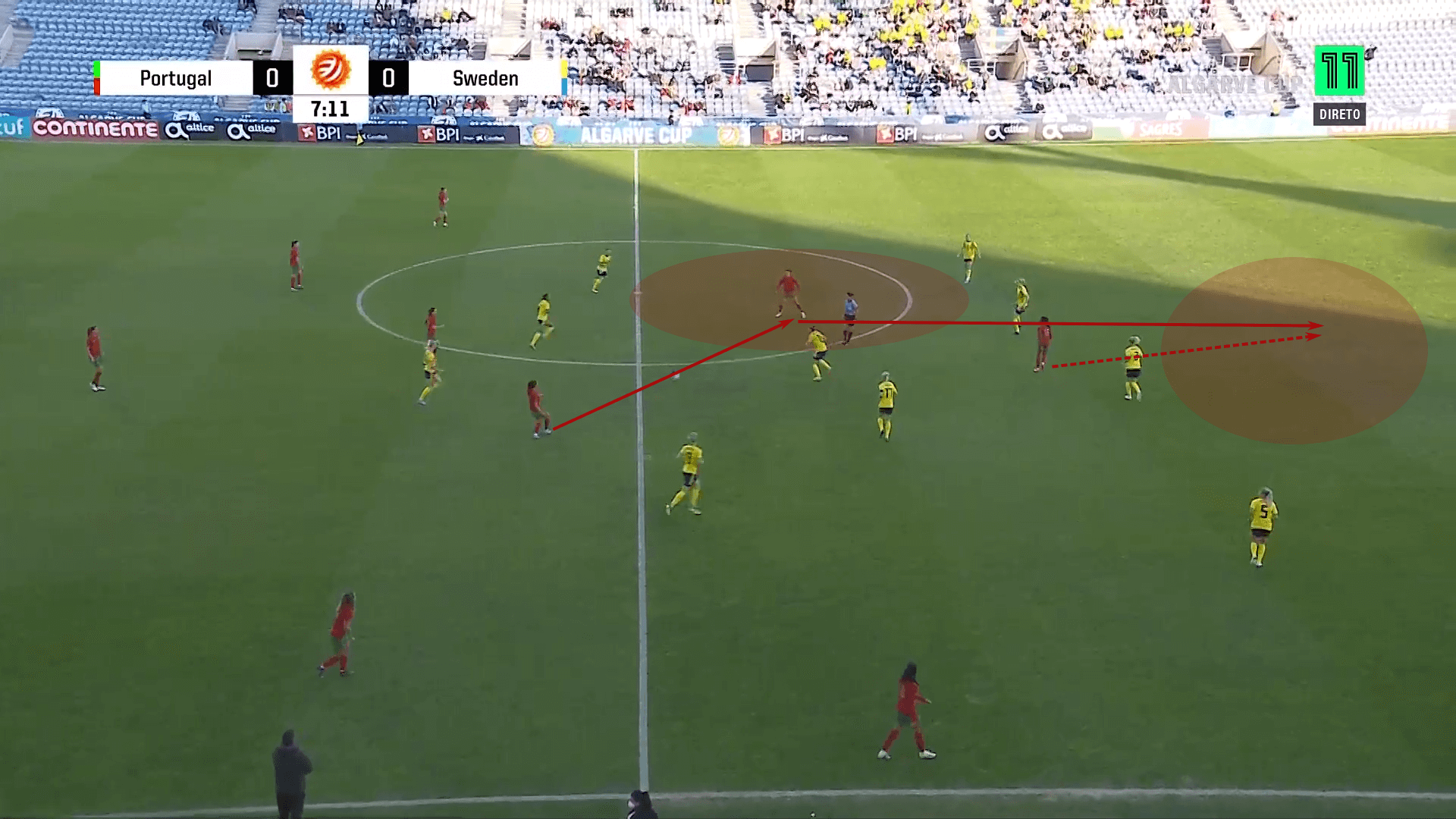
When the midfielders get into those positions, the Portuguese front line will engage. The Silvas especially will look to offer runs in behind. Borges prefers the ball played to her feet, so balls played into her give Portugal the unpredictability they need once they progress into the final third.
As Portugal enters the final third, they often look for box entry through the wing with a cutback cross to the penalty spot. Their forwards are often overshadowed by big centre-backs, so service on the ground against less mobile backs suites the Portuguese.
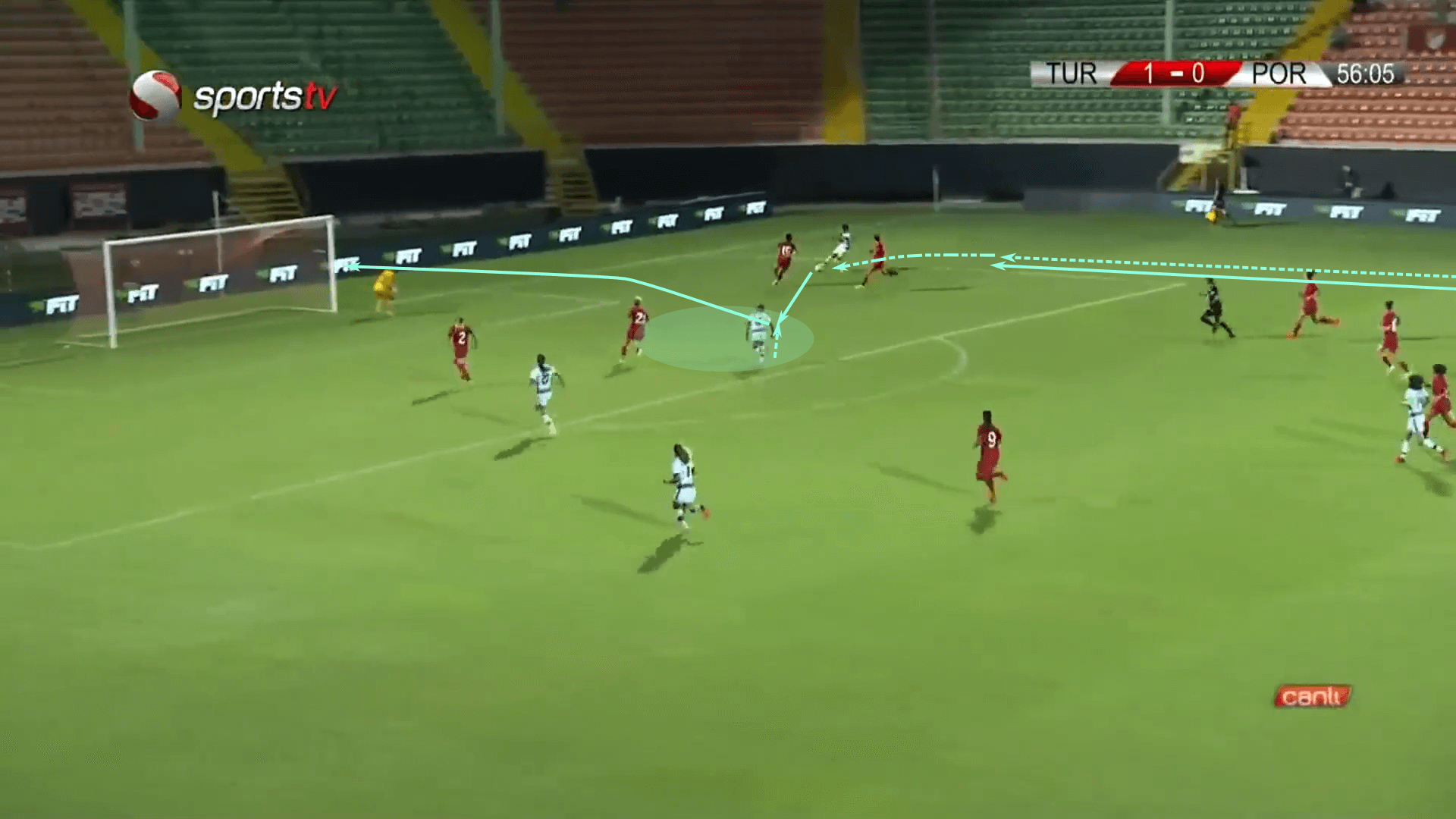
Depending on their midfield grouping or if Mendes is in the game, Portugal may have the size to contest crosses, but that’s a big if. In World Cup qualifying, late runs into the box were often the most successful movements in crossing scenarios.
Portugal’s attack will be challenged by the quality of the opposition in their group, but the plan is very clearly to limit goal-scoring chances and take the limited opportunities they’ll have. They’re the group underdogs who will live the underdog’s tale.
Defensive phase
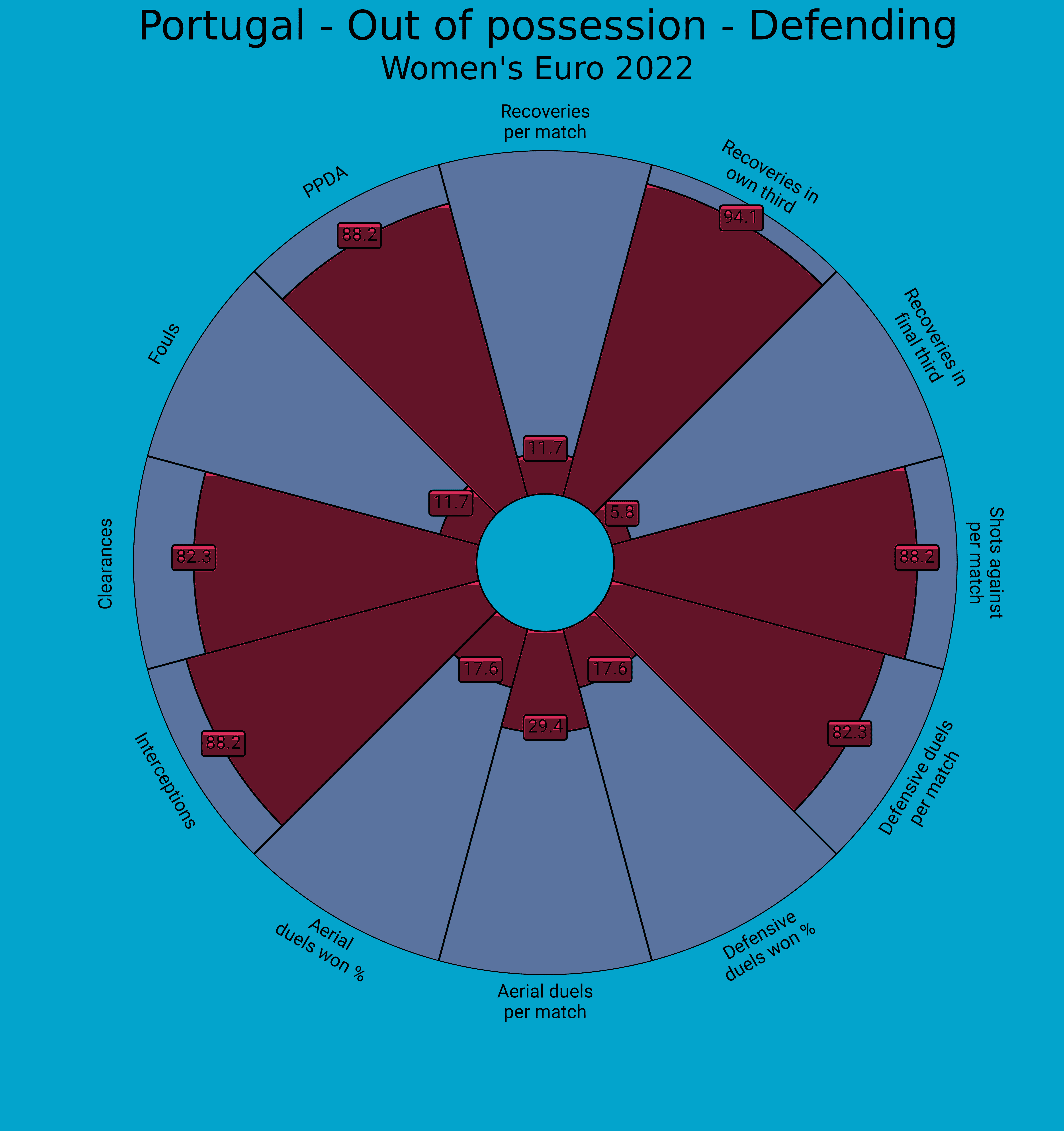
If Portugal fights their way through the group stage, it will be down to their defensive efforts. Conceding just twice in those eight Euro qualifying games, the Iberians are well structured and very aggressive. Portugal’s PPDA was among the best in Europe during the qualifying stages. Rating in the 89th percentile in interceptions and shots against per match, they are a team that recovers ground well, getting pressure on the first attacker and numbers behind the ball.
Since A Selecção das Quinas will go into each match as the underdog, expect them to drop into a mid-block, prioritizing numbers behind the ball. They funnel play through to the wings fairly well but can get caught allowing opponents to re-entre the central channel before play progresses into the box.
Furthermore, Portugal must be prepared for the diversity of attacking styles they will face. Switzerland are a possession-dominant side, Sweden will look to play into their big targets and the Netherlands cleverly create optimal attacking situations for their star players. It’s a challenging scenario that will test Portugal’s versatility, organization and squad depth.
From the 4-3-3, Portugal can either stick with the system in defence or shift to a 4-4-2. Without changing starting personnel, one of the forwards can simply drop into a #10 role to match up against the opposition’s #6.
In the first tactical image, we see that Portugal’s first two lines of the press are often flat. Opponents can get between the lines, which is an issue, but the Portuguese do recover very well.
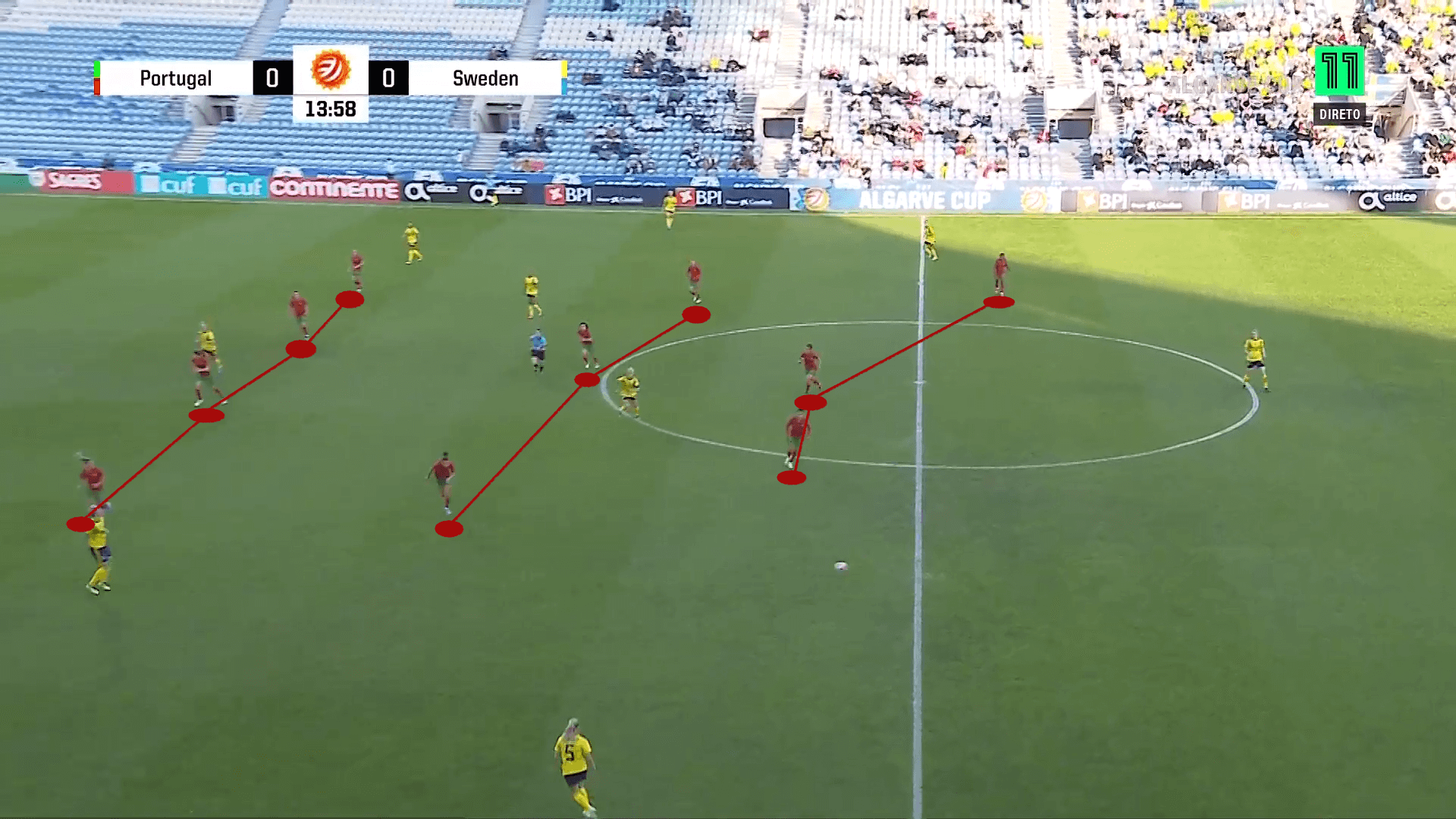
As Portugal drops into their defensive third, that 4-3-3 often becomes a 4-1-4-1, especially against top opposition. The two wide forwards will drop deeper will the team keeps either of the Silvas up top.
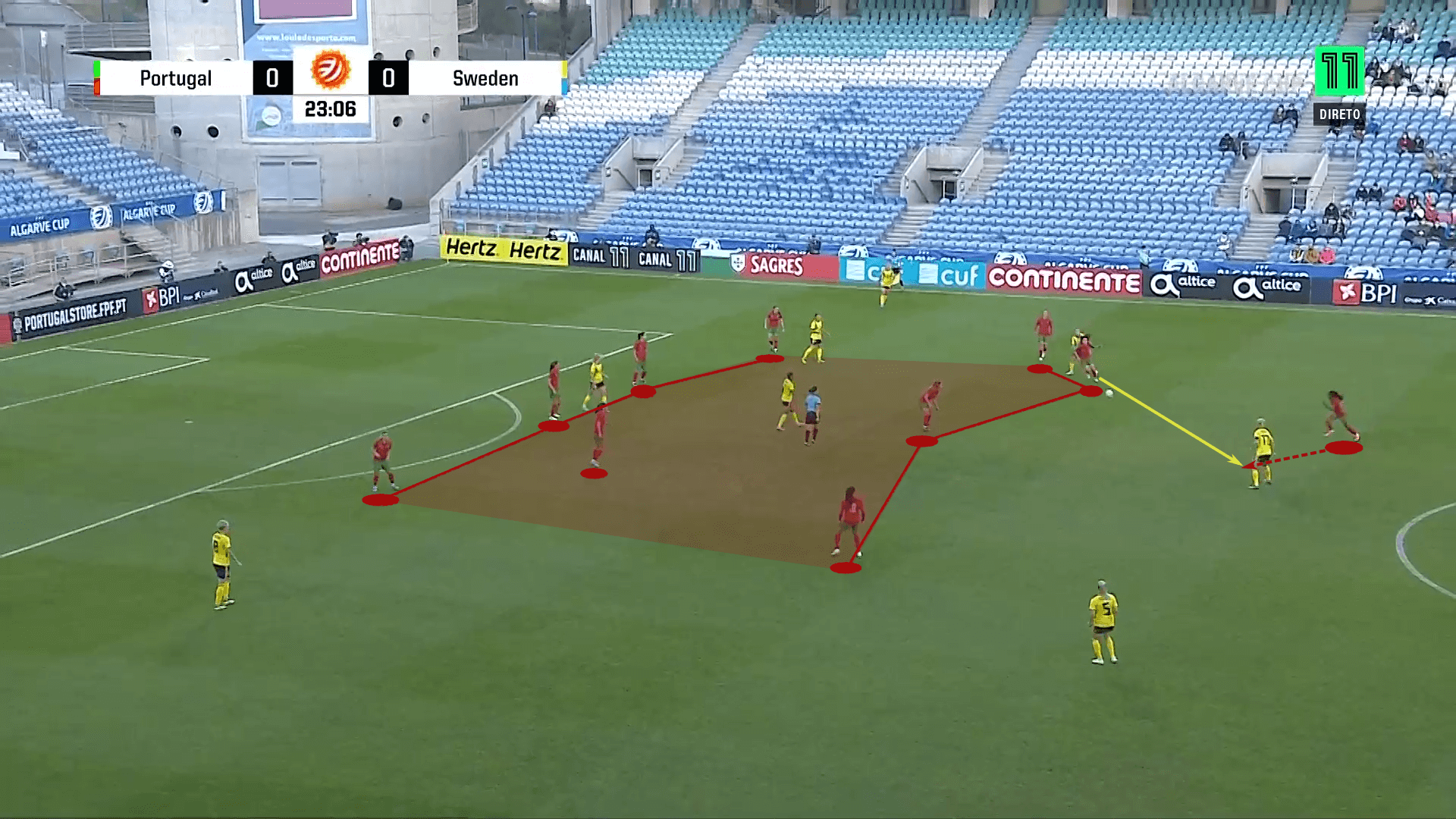
Neto’s squad does look to funnel opponents into the wings, then seal them in. Once the opponent plays into the wings, Portugal collapses quickly and pressures aggressively. For the most part, this is an area of strength. From a team perspective, they’re very well organised.
When there is a breakdown, it usually comes from an individual error, especially from over-pursuit. This will make or break the Portuguese. Limiting breakdowns from mental miscues should keep them in games.
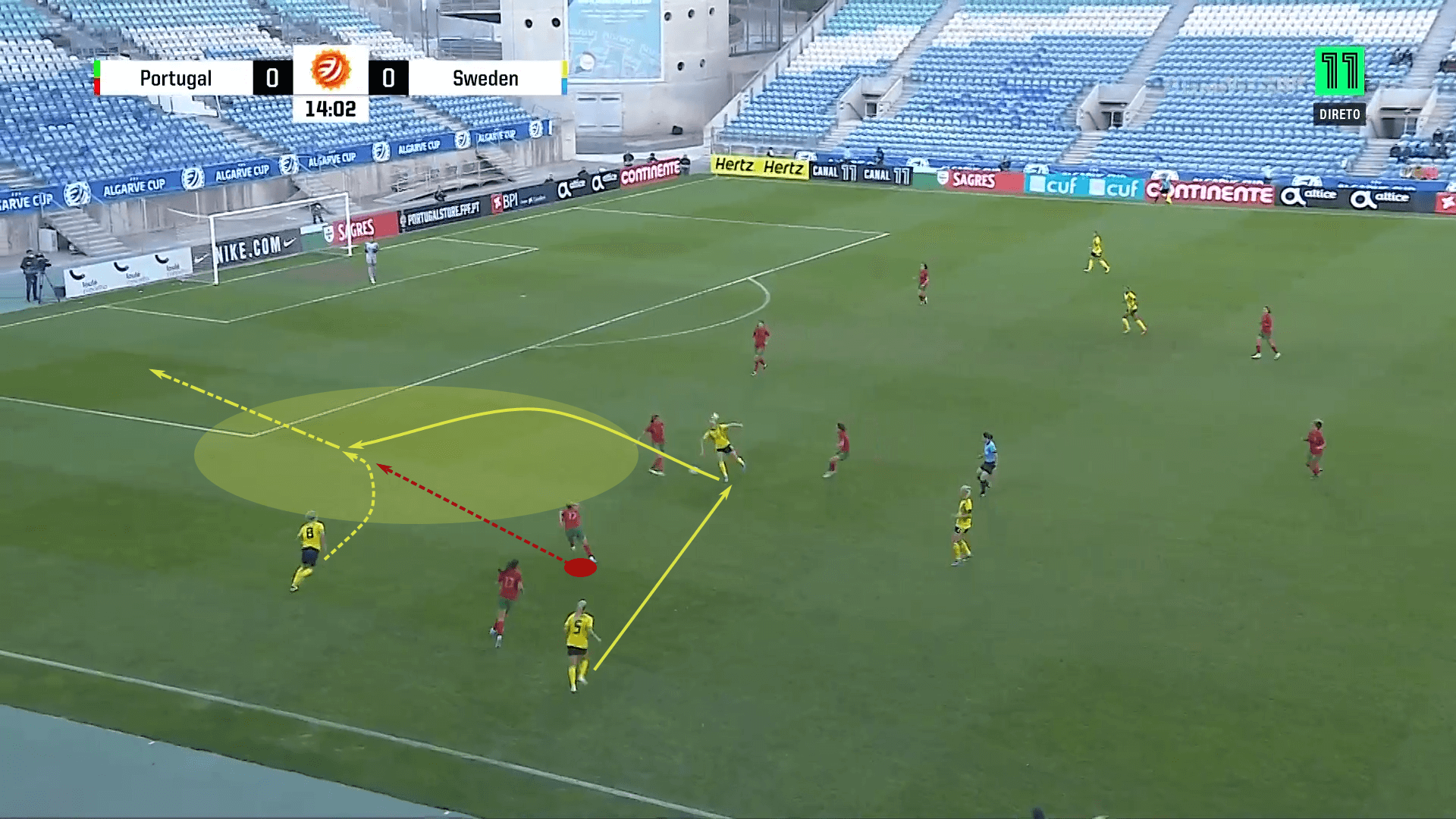
One thing you won’t see is Portugal giving up after a miscue. They will hustle and cover for each other. Their organisation and team spirit will keep them closely connected to offer assistance when a teammate is beaten. Commitment, hustle and intensity are unquestionable within this group. Will it be enough? Time will tell.
Transitions
Mastering transitional moments will be key for Portugal. Given the teams in their group, the Portuguese will likely prioritize organisation in open play, and then take their opportunities in transition. They will have to ensure they’re prepared to deal with opposition counterattacks, limiting those opportunities. With Portugal playing more conservatively, the outside-backs are unlikely to spend much of the game in high and wide positions. Maintaining tactical discipline is paramount to Portugal’s success.
From a defensive transition standpoint, Portugal will have to ensure their midfield does not over-commit near the ball. If they can avoid becoming unbalanced, they’ll give their back line the protection they need.
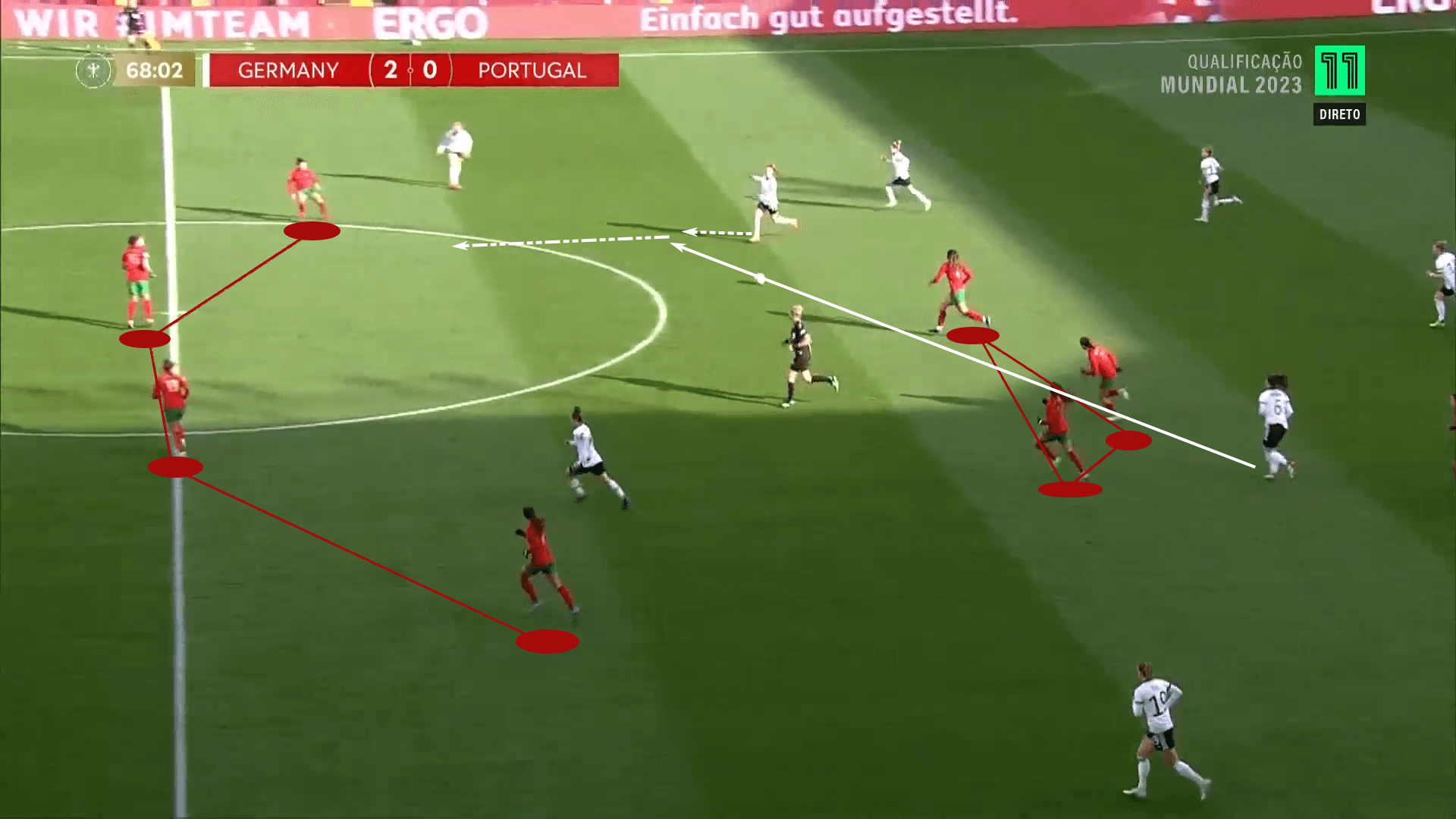
Fortunately, when Portugal does concede space in transition, they are very quick to recover. In the first tactical image, we see an unbalanced Portuguese midfield. Even though Germany has space to attack and can run at the back line, Portugal is quick to get seven players behind the ball. Their mentality is fantastic and they’ll have to show that same level of aggression and intensity through the three games.
In attack, their recoveries will likely come from deeper positions. The mid-block should produce some counterattacking opportunities starting near midfield, but Portugal does tend to recover the ball against top opposition deeper in their own half.
Recoveries from the low block will likely target one of the attacking midfielders or wingers. From the match against Germany, Portugal breaks the first line of the press and has space to run into. This is one of their strengths in transition. After a recovery, they show a good sense of awareness of who the outlets are and manage to play into them rather efficiently.
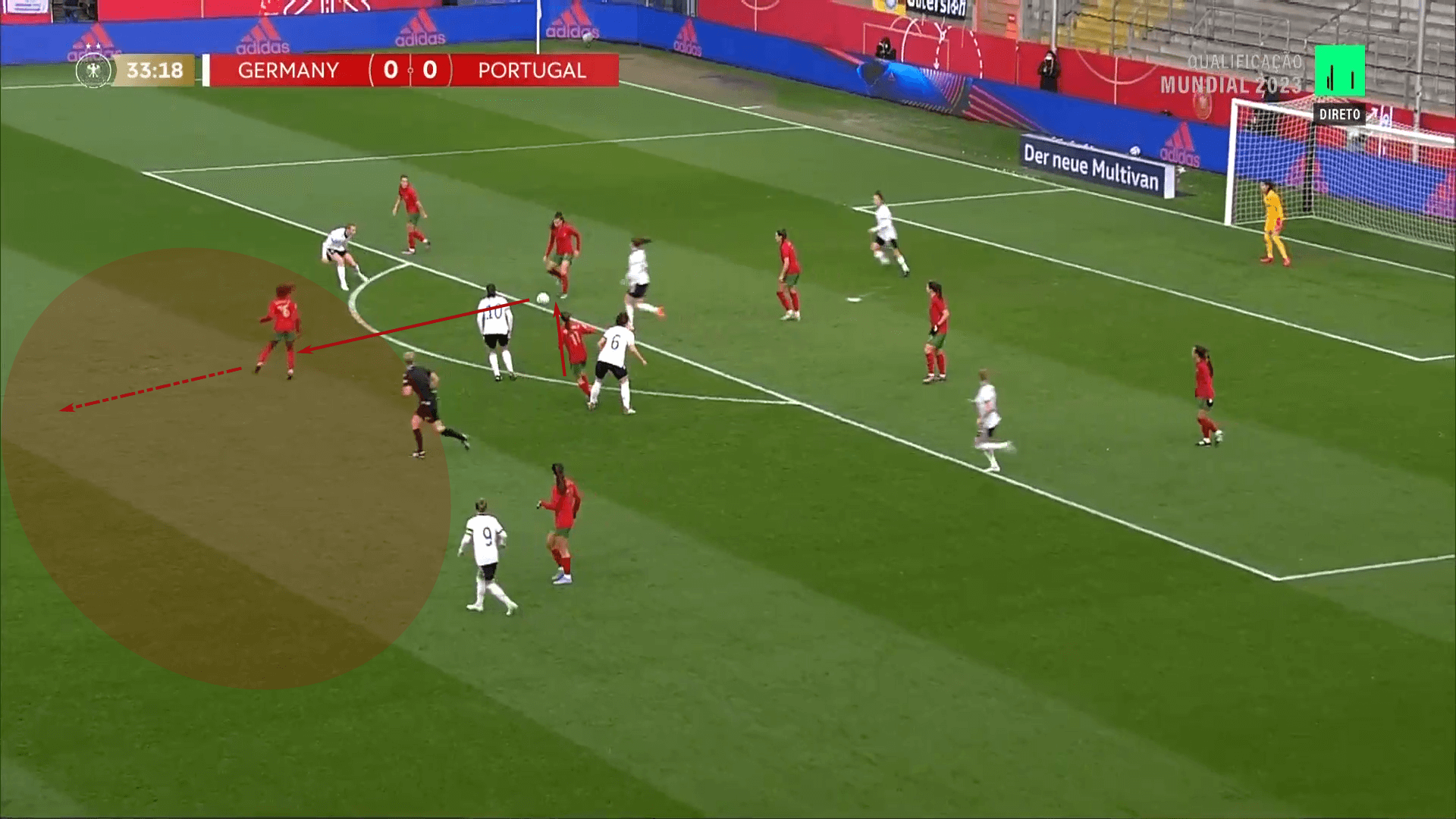
Transitions off of set pieces can be a threat too. One thing to watch in this tournament is the way the Portuguese move immediately after a set-piece. If a clearance or goalkeeper grab occur, Portugal will send two or three players streaking up the pitch.
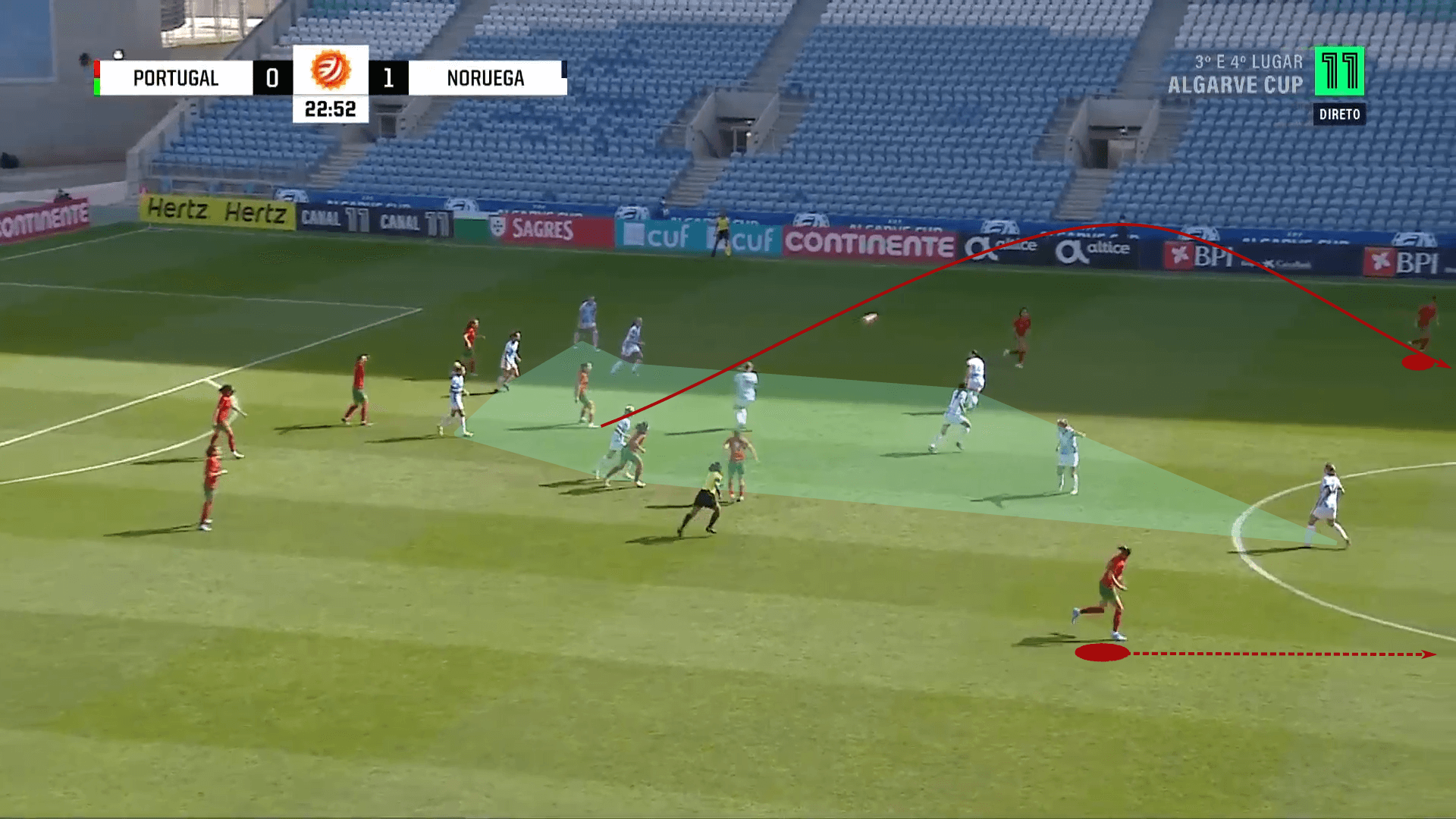
They had some success setting up attacking transitions from set-pieces against Norway, a top women’s side. Look for them to use similar tactics at Euro 2022.
Forwards
Portugal’s forwards have a massive task ahead of them. With the team likely to sit deeper to limit opposition scoring opportunities, the forwards will have to produce that little bit of magic to get the Portuguese goals. Diana Silva will be the primary target up top. With 16 goals in league play, she exceed her xG of 12 and produced 19 key passes.
J. Silva is expected to start, along with Borges, who can also play outside-back. The former added five league goals, the latter two, so the goal-scoring burden will likely fall on D. Silva.
Should Portugal need a goal near the end of the game, Mendes has been in decent form during limited World Cup qualifying playing time and Encarnação is coming off a 15-goal league season. At 20 years old, she has the making of a breakout star. Opportunities with the national team have been limited thus far, but she’s someone who can provide a spark off the bench.
Midfielders
The Pintos give Portugal a nice blend of defensive muscle plus attacking creativity. Between them and D. Silva, the Portuguese midfield averaged a robust 86% passing success rate in league play. With their defensive capabilities and smooth technical play, the Portuguese midfield is arguably the team’s strength.
Looking beyond the starters, there is plenty of quality on the bench. Should Neto decide on heavy rotations, picking his starting XI based on his analysis of the opposition’s tactics, he has the depth to do so. Nazareth is a dynamo in the final third, registering 10 goals, eight assists and 31 key passes in league play.
Capeta can add some width and dangerous crosses (47% in the league) and there are three Andreias to choose from, all quality in possession. Malho has a knack for goal as well (seven in the league), so Neto has the resources to fit his midfield to the opposition.
Defenders
Keeping the opposition off the scoreboard, thus limiting the number of goals Portugal needs, is key to their tournament success. The backline will have their hands full, but they have the experience, quality and commitment to keep Portugal in matches.
Costa is the leader at the back. The Benfica centre-back rarely loses the ball and makes it difficult for opponents to play into her mark. Statistically, she’s far from the team lead in tackles, interceptions and free ball pickups. Film analysis shows that it’s not a case of lack of involvement. Rather, she makes it very difficult for her mark to participate in the play, so she does excellent work before the ball arrives. Rebelo could join her club teammate, but Gomes is another strong option. Azevedo will likely add depth at the tournament.
Out wide, Marchão is the team’s top attacking outside-back. With six goals and three assists in league play, as well as a respectable 30% cross accuracy rate, she’s the likelier of the two starters to push higher. Amado is the likely starter on the right. She’s a complete player who will give Portugal the defensive presence they need with some attacking upside. Correia and Borges (the projected starting forward) could factor in at outside-back as well.
Best performer
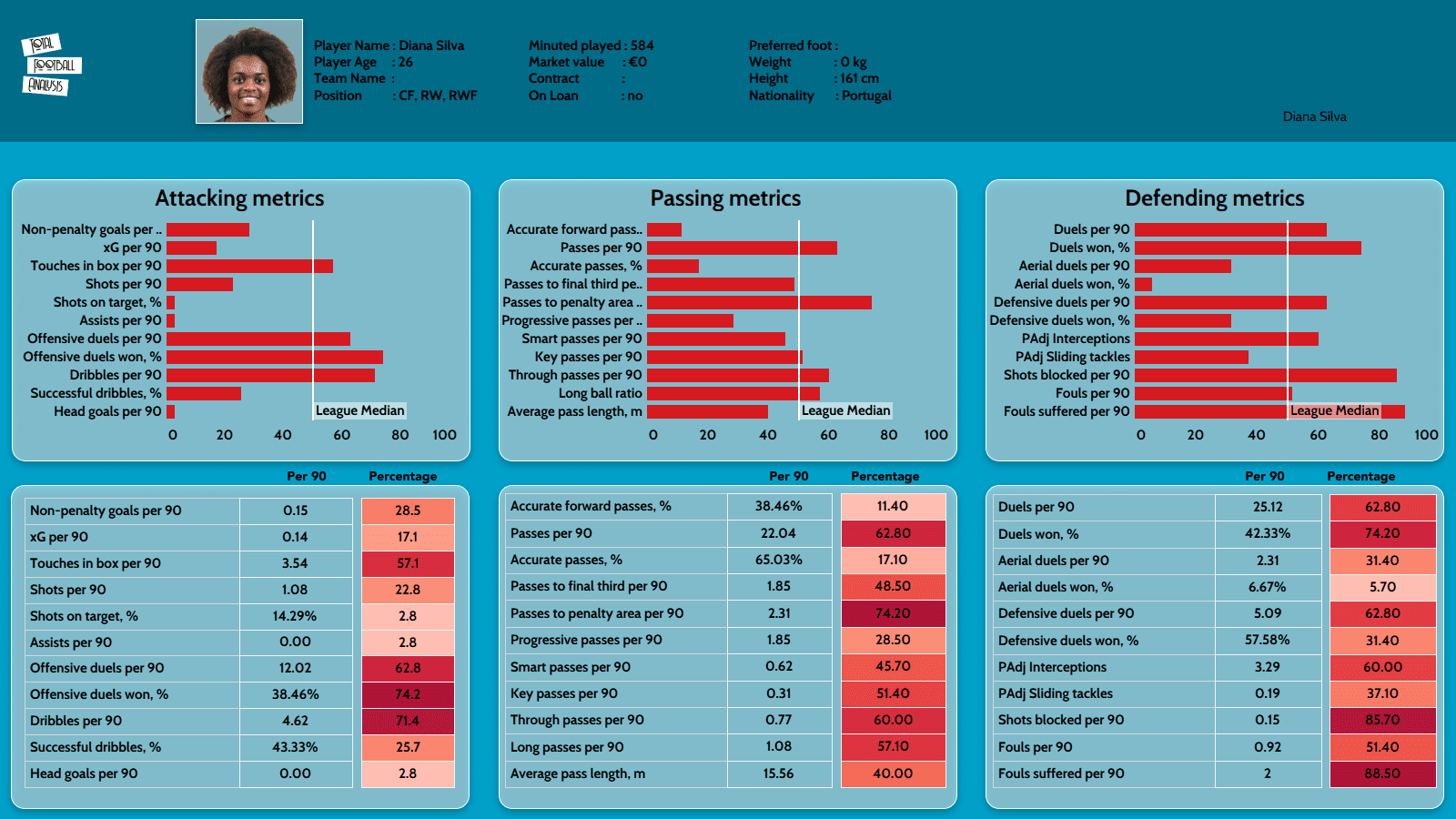
After a disappointing season at Aston Villa, Silva returned to the Portuguese league with Sporting, putting in an excellent campaign. Having traded matches in the FAWSL against Chelsea and Arsenal for consistent playing time in her homeland, Silva has returned to form, finishing second in goals scored last season. Since Portugal’s wide forwards are more traditional wing playmakers, the scoring burden will fall on Silva.
While she struggled to find the net in England, her 16 goals in 20 Campeonato Nacional Feminino games give cause for hope. She will find her way into the box, especially with her dribbling ability and Portugal’s counterattacking style. Plus, her defensive contribution is excellent. Silva has the ability to create her own chances simply through her work rate in the press.
For Portugal to have a good showing at the Euros, she will have to play a major role in the goals, either as the scorer or via her playmaking ability.
Tournament Prediction
Participating in Euro 2022 comes as a surprise for the Portuguese. Getting into the tournament based on Russian sanctions, the Iberians enter the tournament playing with house money. They simply weren’t supposed to be here.
However, that won’t be enough for this football-crazed nation.
Finding their way into the knockout rounds for the first time in their history would be a tremendous accomplishment for this emerging squad, but the minimum expectation is to be competitive in the tournament. Stealing a result or two would be a nice bonus. Starting well is a priority, especially since the first game is against Switzerland — the third-rated team in the group.
Should Portugal put in a good showing in their second consecutive European championship (and second overall), it will be viewed as a building block for the future, ideally leading to a first World Cup appearance.

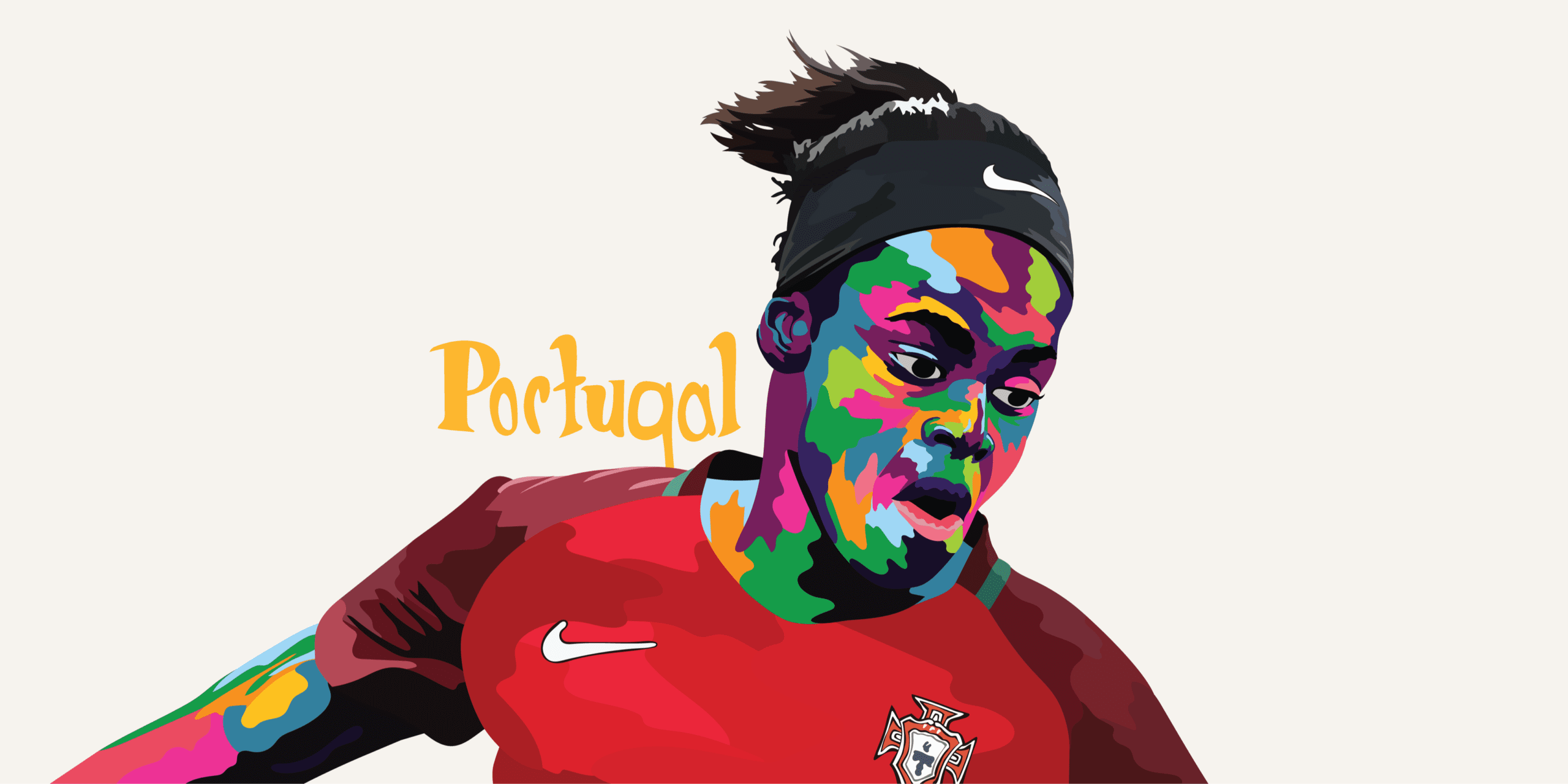



Comments